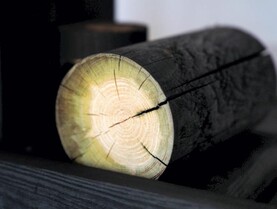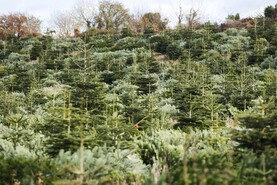Coillte owns and manages 7% of Ireland’s land. It’s the first thing the body tells you about itself on its website. It also tells you it is a commercial semi-state body. That would suggest it would be eagerly implementing Government policy and eagerly telling the world about it.
From that we can only conclude that the Government is indifferent to planting of native species deciduous trees. Because, as Declan O’Brien’s article in this week’s paper makes clear, Coillte isn’t planting a lot of deciduous trees. The body confirmed it isn’t planting much fresh ground, only around 200ha over the last five years. That’s an average of 40ha a year, not much bigger than the average Irish farm. And no more than 30% of that – 12ha a year – is being planted to deciduous trees. I’d wager that more deciduous trees have been felled by storm Barra over a couple of days than Coillte has planted in a decade.
A hardwood tree would have to have been planted in the 1970s to be ready for harvest now
Meanwhile, Coillte is coy on how much of its replanted land is sown to deciduous trees. If it is engaging in like-for-like replanting, probably very little, as it’s mainly conifers that are felled in Coillte plantations. A hardwood tree would have to have been planted in the 1970s to be ready for harvest now.
Perhaps this is the correct approach for Coillte – much of its land base is perhaps better suited to conifers.
Conifers are better carbon sinks as they mature in half the time, and can be cut down and regrown
And anyone who listens to Dr David Styles, the University of Limerick lecturer who calmly impressed dairy farmers at last week’s ICMSA AGM (not a simple task for an expert in environmental engineering and land use) would know that he holds that deciduous trees are less effective carbon sinks than faster-growing Sitka spruce. Conifers are better carbon sinks as they mature in half the time, and can be cut down and regrown.
However, crucial to this is the end-use of the timber grown and harvested. If it is burned, the carbon is simply returned to the atmosphere. However, long-use timber, such as for construction, sees the carbon retained in the timber. It also can mean a renewable resource replaces concrete products – a double bounce.
The log-jammed approvals system is leaving logless timber yards
All the more reason then, to ensure there is no barrier to harvested Irish timber going to long-use purposes.
Which makes the farcical state of felling licences even more of a disgrace. The log-jammed approvals system is leaving logless timber yards, and it’s high-end usage that will suffer the most and take the longest to fix.
What an awful mess.






 This is a subscriber-only article
This is a subscriber-only article










SHARING OPTIONS: